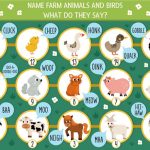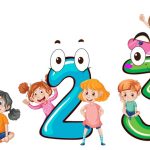Grammar is the foundation of language learning. It provides the structure that supports clear communication, beautiful expression, and precise thought. For our kids, mastering grammar is more than rote memorization of rules; it also entails creating a lasting connection with the English language. As Indian parents, we frequently ponder the ideal age to introduce grammar to our children as well as the fundamental subjects to cover at each grade level. This guide provides a roadmap for this journey, ensuring that your child’s linguistic growth is both robust and enjoyable.
Kindergarten: Laying the Foundation for English grammar for kids
Introduction to Sentences: At this tender age, children are bubbling with thoughts and ideas. This is an excellent time to introduce children to the notion of a sentence. Let them understand a group of words that communicate an entire thought.
Nouns and pronouns: Kids that go to kindergarten are inherently curious, especially about the names of things in their environment. When we get to expose them to nouns—those specific words that allow us define people, places, objects, or even ideas—it is one of the genuinely lovely moments. It’s like opening a door to a whole new world of language for these little explorers.
Verbs: Actions speak louder than words, and for kindergarteners, verbs are those action words. Simple verbs like ‘run’, ‘jump’, ‘eat’, and ‘sleep’ can be taught through fun activities and games.
Grade 1: Building Upon the Basics
Adjectives: As children’s vocabulary expands, they begin to describe the world around them. This is the right age to introduce adjectives—words that describe nouns. Words like ‘beautiful’, ‘tall’, ‘soft’, and ‘loud’ can be taught using relatable examples.
Simple Prepositions: Prepositions are words that show the relationship between a noun (or pronoun) and other words in a sentence. Introducing basic prepositions can be done through interactive storytelling.
Understanding Punctuation: The period, question mark, and exclamation point are the three primary punctuation marks to introduce. These help give tone and clarity to sentences.
Grade 2: Diving Deeper into Grammar
Conjunctions: By grade 2, children are ready to form more complex sentences. Conjunctions like ‘and’, ‘but’, ‘or’, and ‘because’ can be introduced to combine sentences or express contrasting ideas. Adverbs are those little word wizards that give us the scoop on how actions happen. They hop in to describe verbs, while their cousins, adjectives, cosy up to nouns. Now is the ideal time to introduce the notion of singular and plural nouns, as well as to delve into the fundamentals of tenses like present, past, and future. It’s like creating the groundwork for a strong language framework, and from there, youngsters can develop their language abilities.
Tips for Parents:
While introducing English grammar for kids, these tips will come in handy.
Consistency is Key: Just as a plant needs regular watering to thrive, a child’s understanding of grammar requires consistent nurturing. Regular practice, even for brief periods of time, can be more fruitful than occasional, protracted sessions. How frequently your child studies matters more than how long they study. Setting aside a dedicated time each day for grammar practice can create a routine that your child will naturally adapt to, leading to better retention and understanding.
Interactive Learning: The traditional method of rote learning can be tedious for young minds. Instead, opt for interactive methods like games, storytelling, and real-life scenarios to teach grammar concepts. For instance, a simple game of ‘I spy’ can be modified to identify nouns, or a family storytelling session can be used to spot adjectives. Such interactive methods not only make learning engaging but also ensure that the concepts are etched in the child’s memory.
Celebrate Small Wins: The journey of mastering grammar is filled with numerous small milestones. Every new word learned, every sentence constructed correctly, every punctuation used appropriately is a step forward. Celebrate these small achievements, whether it’s with words of encouragement, a sticker, or a small treat. This not only boosts your child’s confidence but also instals a love for learning.
Patience and Positivity: Grammar can occasionally be difficult for young learners because of its many rules and exceptions. As they learn to negotiate the complexities of the English language, it’s normal for kids to make mistakes. It’s essential for parents to handle these mistakes with patience and a constructive mindset. Instead of pointing out mistakes directly, encourage your child to find and correct them on their own. Celebrate the effort they put in, rather than just the outcome. A positive and patient approach not only helps in building a strong grammar foundation but also ensures that the child remains enthusiastic and confident in their language learning journey.
The Role of Reading in Grammar Mastery:
Reading is one of the best strategies to improve grammar abilities. Children who are exposed to well-written sentences in books ingest grammar rules on a subconscious level. Reading a diverse range of books exposes them to different sentence structures, vocabulary, and writing styles. Moreover, reading aloud can help them understand the rhythm and intonation of the language. As parents, it’s beneficial to set up a reading corner at home, visit libraries regularly, and discuss the books read. This not only strengthens their grammar but also fosters a lifelong love for reading.
Incorporating Technology in Grammar Learning:
In this digital age, technology can be a valuable ally in teaching grammar. There are numerous apps and websites designed specifically for grammar learning for kids. These platforms use animations, quizzes, and interactive exercises to make grammar lessons fun and engaging. However, it’s crucial to make sure that screen time is regulated and that the material is suitable for children. Your child can benefit from a comprehensive learning experience when conventional teaching techniques are combined with technology.
For parents seeking a holistic learning environment for their children, EuroKids offers a curriculum that beautifully blends academic and non-academic learning. With a focus on experiential learning, EuroKids ensures that concepts like grammar are not just taught but are ingrained in the child’s cognitive fabric. Our warm, nurturing environment is perfect for fostering a love for the English language and its many nuances.
Grammar study in English is a journey, not a destination. It involves helping kids comprehend and express themselves through language in meaningful ways. Grammar gives language structure and beauty, much like the fine threads of a tapestry. With the right strategy, resources, and encouragement, your child may learn to use grammar as a potent tool for communication. They can incorporate their own tales, thoughts, and emotions into the language fabric. We can play a significant role in this journey as parents. We can advise our children, praise their accomplishments, and assist them in overcoming obstacles. We can work together to create a learning environment that is both enjoyable and fulfilling.
















